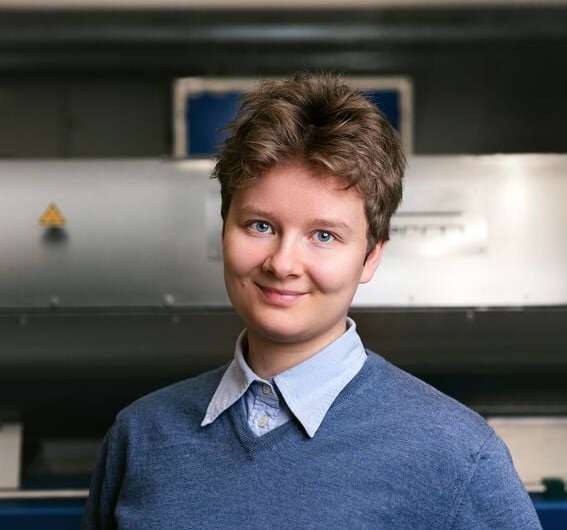Developing sustainable textiles as alternatives to fossil-based fibers

Today’s outdoor clothing mainly relies on oil-based fibers and chemicals that are harmful for the environment. In her doctoral research, Helena Sederholm develops environmentally friendly water-repellent textiles by following the example of nature.
Sederholm, a doctoral researcher at Aalto University’s Bioinnovation Center, wants to contribute to a sustainable future. “Environmental and climate issues are close to my heart. I want to use my education and learning to solve the obstacles to a better world. There are many problems like this in the textile industry,” says Sederholm.
Originally from Espoo, Sederholm was already interested in natural sciences during her basic education and particularly keen on chemistry and biology. She started studying for a bachelor’s degree at the Aalto University School of Chemical Engineering in 2017.
“During my studies, materials sciences and, in particular, biomaterials started to attract me. I ended up in the Master’s Degree Program of Fiber and Polymer Technology, where I was able to familiarize myself with bio-based fibers. It felt right.”
The growing sector needs doctors
In her master’s thesis, Sederholm studied the recyclability of fibers produced with the Ioncell technology. The thesis indicated that recycled Ioncell fibers are just as suitable for textile production as original cellulose fibers. Sederholm graduated with a Master of Science degree in autumn 2022.
“In my master’s thesis, I got to familiarize myself with the academic world of research. I liked experimental work and enjoyed my time in the research group.”
Postgraduate studies started to interest Sederholm, so she applied for doctoral studies at Aalto University’s Bioinnovation Center, where she was able to start immediately after her master’s studies.
“Bio-based textiles are still a new field in Finland, but this sector will surely grow. I believe that there will be a need for doctors with expertise and vision related to biomaterials by the time I finish my doctoral studies.”
Using natural phenomena as a model
In her doctoral research, Sederholm develops an environmentally friendly way of producing hydrophobic textiles for outdoor clothing. The hydrophobic properties of today’s outdoor clothing mainly result from synthetic fossil-based fibers. Fossil-free alternatives, on the other hand, contain chemicals that are harmful for the environment.
“Fortunately, water repellent materials can be found in nature. I try to copy them and apply similar methods in the Ioncell process. One option is to develop lignocellulosic fibers using lignin derived from wood. In addition to having hydrophobic properties, the fibers used in outdoor clothing must be sufficiently strong.”
The cross-disciplinary CelluMimicry study combines Aalto University’s expertise in chemical technology and business.
“We are studying how to commercialize bio-based water-repellent materials and how suited they are for mass production. Sustainability and ecology are growing trends that increase responsibility in the consumption of clothing. On the other hand, there are also many challenges involved with the commercialization of bio-based materials, such as the cost of clothing and dyeing of textiles.”
Sederholm is inspired by the concrete nature of her doctoral research. “One day, when my experiments have hopefully been successful, I can hold a piece of fabric in my hand and say, I did it! My research results are not just numbers on the screen or graphs on paper, but material that I can touch and hold.”
Citation:
Developing sustainable textiles as alternatives to fossil-based fibers (2023, May 25)
retrieved 25 May 2023
from https://phys.org/news/2023-05-sustainable-textiles-alternatives-fossil-based-fibers.html
This document is subject to copyright. Apart from any fair dealing for the purpose of private study or research, no
part may be reproduced without the written permission. The content is provided for information purposes only.
For all the latest Science News Click Here
For the latest news and updates, follow us on Google News.

